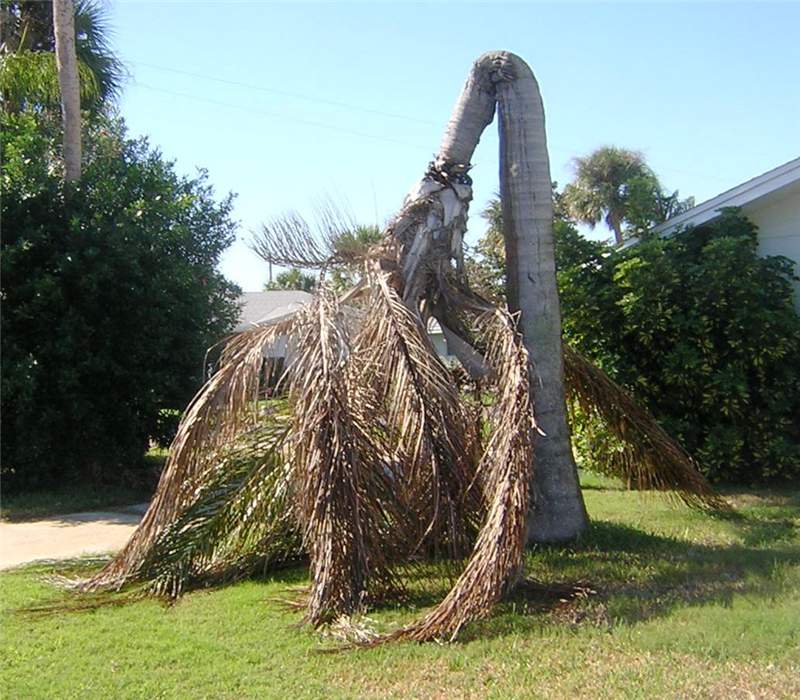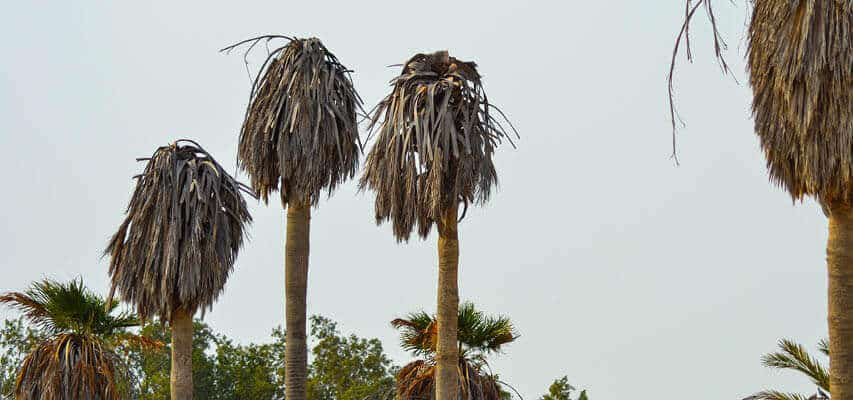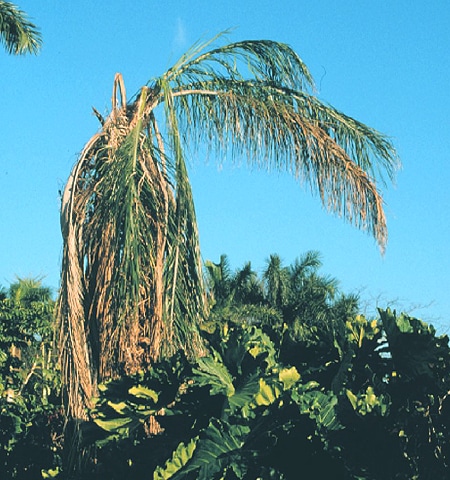The Importance of Palm Trees in Florida’s Ecosystem
Palm trees are not just iconic symbols of Florida’s picturesque landscapes; they play a crucial role in the state’s ecosystem. These trees are integral to Florida’s identity, contributing significantly to its natural beauty and providing a habitat for a wide range of wildlife. Palms offer shelter and food for birds, insects, and other animals, creating a vibrant ecosystem that supports biodiversity. Beyond their ecological value, palm trees also contribute to the economic well-being of the state. They are a vital part of Florida’s tourism industry, attracting visitors from around the world who come to enjoy the state’s tropical ambiance. Moreover, palms are used in landscaping, adding value to properties and enhancing community aesthetics.
However, the health of Florida’s palm trees is under constant threat from various diseases and pests. These challenges not only jeopardize the trees’ survival but also threaten the ecological balance and economic benefits they provide. Recognizing the signs of disease early and understanding how to manage these issues is essential for preserving the health of Florida’s palms. Effective disease management and prevention strategies can help ensure that palm trees continue to thrive, supporting the ecosystem and economy. As such, the health of palm trees in Florida is not just a concern for individual homeowners or landscapers but a matter of statewide importance, requiring collective efforts to protect these valuable natural resources.
Recognizing the Signs of Disease in Palm Trees
Identifying the early signs of disease in palm trees is crucial for maintaining their health and preventing the spread of infections. In Florida, where palm trees are a significant part of the ecosystem, being vigilant about disease symptoms can save not only individual trees but also protect the broader landscape. Common signs of palm tree disease include yellowing or browning of leaves, premature leaf drop, stunted growth, and the appearance of unusual spots or lesions on the fronds.
Florida palm tree pests and fungal diseases can cause these symptoms, making it essential to understand the specific signs associated with each condition. For instance, palm tree fungal diseases often manifest as rotting at the base of the tree or on the fronds, leading to weakened structures and eventual collapse. On the other hand, pests like the palm weevil may cause damage that leads to similar symptoms but requires a different approach to management and treatment.
Effective palm tree care in Florida involves regular monitoring for signs of distress. Early detection of symptoms can be the key to preventing the spread of disease. When treating palm tree infections, it’s important to accurately diagnose the problem to apply the correct treatment. This may involve removing infected parts of the tree, applying fungicides or pesticides, or in some cases, removing the tree entirely to prevent disease spread.
For homeowners and professionals alike, understanding the signs of palm tree disease is the first step in protecting these valuable and iconic plants. By staying informed and proactive, it’s possible to manage and even prevent many of the common diseases that affect palm trees in Florida.

Lethal Yellowing: Symptoms and Management
Lethal Yellowing (LY) is a devastating disease that affects many species of palms, including some of the most common varieties found in Florida. This disease is caused by a phytoplasma, which is transmitted by the planthopper insect. The symptoms of Lethal Yellowing can vary slightly depending on the species of palm but generally include premature fruit drop, yellowing and then browning of fronds starting from the lower ones and moving upwards, and the eventual death of the palm if not treated.
Management of Lethal Yellowing requires a multifaceted approach. Early detection is crucial; therefore, regular monitoring of palm trees for the first signs of the disease is essential. Once detected, infected palms may be treated with antibiotics such as oxytetracycline HCl. This treatment does not cure the palm but can suppress the disease if applied regularly, typically every three to four months. However, it’s important to note that not all palm species respond to antibiotic treatment, and in some cases, removal of the infected palm may be necessary to prevent the spread of the disease to nearby healthy palms.
Preventive measures include planting resistant palm species, as some are naturally less susceptible to Lethal Yellowing. Additionally, controlling the population of the planthopper insect can help reduce the spread of the disease. Integrated Pest Management (IPM) strategies, such as the use of biological controls and maintaining overall tree health, can also decrease the likelihood of severe outbreaks. For homeowners and professionals managing landscapes in Florida, understanding and implementing these management strategies can be key to preserving the beauty and ecological benefits of palm trees in the region.
Ganoderma Butt Rot: Identification and Prevention
Ganoderma Butt Rot, caused by the fungus Ganoderma zonatum, is a lethal disease affecting palm trees, particularly prevalent in Florida. This disease targets the base or the “butt” of the palm, leading to the decay of the wood. Unlike other diseases, Ganoderma Butt Rot is not spread through the air but through the soil, making it a challenging disease to control once established.
Identification of Ganoderma Butt Rot begins with observing the external symptoms on the palm. One of the earliest signs is the appearance of a conk, a mushroom-like growth, at the base of the palm. This conk is the fruiting body of the fungus and can vary in color from white to brown. It’s important to note that the presence of a conk is a definitive indicator of Ganoderma Butt Rot, and by the time it appears, the disease is usually in its advanced stages. Other symptoms include a general decline in the palm’s health, wilting, and yellowing of fronds.
Preventing Ganoderma Butt Rot involves several cultural practices aimed at reducing stress on the palms and avoiding wounds through which the fungus can enter. It is crucial to implement proper irrigation, fertilization, and pruning practices. Avoid wounding the palm’s trunk during landscaping activities, as wounds can serve as entry points for the fungus. Since the disease is soil-borne, replacing soil and sterilizing planting tools can help prevent its spread. Unfortunately, there is no effective chemical treatment for Ganoderma Butt Rot once a palm is infected. The best approach is to remove and destroy the affected palm to prevent the disease from spreading to nearby palms.
For Florida palm tree owners, understanding the signs of Ganoderma Butt Rot and implementing preventive measures are key steps in protecting their palms from this deadly disease. Early identification and response can help manage the spread of Ganoderma Butt Rot, preserving the health and beauty of Florida’s palm trees.

Fusarium Wilt: Understanding and Controlling the Spread
Fusarium wilt is a formidable adversary for Florida’s palm trees, caused by the fungus Fusarium oxysporum. This disease specifically targets the vascular system of the palm, obstructing water and nutrient flow within the tree, leading to its eventual decline and death. Recognizing the signs of Fusarium wilt is crucial for early intervention and management. Symptoms often manifest as one-sided yellowing or wilting of fronds, which progressively worsens, affecting the entire canopy. Unlike some other palm tree diseases, Fusarium wilt is unique in its method of spread, primarily transmitted through contaminated cutting tools rather than pests or wind.
Controlling the spread of Fusarium wilt hinges on adopting stringent sanitation practices. Since the disease is easily spread through contaminated tools, sterilization between uses on different trees is paramount. Using a solution of bleach or alcohol to clean pruning equipment can significantly reduce the risk of spreading the fungus. Additionally, it’s important to avoid wounding palms as much as possible, as open cuts can serve as entry points for the fungus.
Unfortunately, there is no cure for palms already infected with Fusarium wilt. The best course of action is to remove and properly dispose of affected trees to prevent the disease from spreading to healthy palms. Implementing resistant palm species in landscapes can also be a proactive measure against Fusarium wilt. By understanding the symptoms and adopting preventive practices, the spread of Fusarium wilt can be controlled, ensuring the health and longevity of Florida’s palm trees.
Bud Rot: Causes, Symptoms, and Treatment
Bud rot is a significant disease affecting palm trees, caused by a variety of pathogens including fungi and bacteria. This disease primarily targets the heart or bud of the palm, leading to its decay and eventual death if not treated promptly. In Florida’s humid climate, bud rot poses a serious threat to the health of palm trees, making understanding its causes, symptoms, and treatment options crucial for effective management.
The causes of bud rot are multifaceted, often stemming from fungal infections by Phytophthora and Thielaviopsis species, or bacterial infections. These pathogens can gain entry into the palm through wounds in the bud area, which might occur due to pruning, pest damage, or environmental stress. Excessive moisture and poor air circulation around the palm’s crown can exacerbate the condition, creating an ideal environment for the pathogens to thrive.
Recognizing the signs of bud rot early is key to saving the affected palm. Symptoms include the blackening and wilting of young leaves or spear leaves, which may fail to open. As the disease progresses, the bud may rot away completely, leading to the palm’s death. In some cases, a foul smell may be emitted from the rotting bud, serving as a further indicator of the disease.
Treatment for bud rot involves removing the affected parts of the palm to prevent the spread of the disease. This should be done with sterilized tools to avoid contaminating healthy tissue. Fungicides and bactericides can be applied as a preventive measure, though their effectiveness varies depending on the pathogen involved. Improving drainage, reducing overhead watering, and ensuring good air circulation around the palm are cultural practices that can help prevent bud rot. In severe cases, professional help may be necessary to accurately diagnose and treat the disease to save the palm.

Texas Phoenix Palm Decline: Early Detection and Response
Texas Phoenix Palm Decline (TPPD) is a serious disease affecting various species of palms, including the popular Florida native, the Sabal palm. Caused by a phytoplasma, TPPD is often mistaken for lethal yellowing but affects a different range of palm species. Early detection and prompt response are crucial in managing this disease and preventing its spread.
Signs of TPPD include the premature dropping of fruits, discolored or necrotic inflorescences, and a general decline in the palm’s vigor. One of the most telling symptoms is the browning and wilting of the oldest leaves while the spear leaf (the youngest leaf at the top) remains green, eventually collapsing as the disease progresses. Unlike some other palm diseases, TPPD leads to a rapid decline, often resulting in the death of the palm within a few months if not addressed.
Early detection involves regular monitoring of palms for the aforementioned symptoms. If TPPD is suspected, it is imperative to consult with a professional who can confirm the diagnosis through laboratory testing. Given the infectious nature of the disease, affected palms should be removed and destroyed to prevent the spread to nearby healthy palms.
There is currently no cure for TPPD, making prevention and early intervention the best strategies. Implementing good cultural practices, such as proper irrigation, fertilization, and avoiding injuries to the palm, can help reduce stress and make palms less susceptible to diseases like TPPD. Additionally, the use of insecticides to control the insect vectors that spread the phytoplasma may be recommended in areas where TPPD is prevalent.
For those managing multiple palms, whether in a residential or commercial setting, staying informed about TPPD and other palm tree diseases is essential for maintaining the health and beauty of these iconic Florida trees.
Integrated Pest Management for Healthy Palms
Integrated Pest Management (IPM) is a holistic approach to maintaining healthy palm trees in Florida, focusing on long-term prevention of pests and diseases through a combination of techniques. This strategy emphasizes the importance of understanding the ecosystem and using cultural, biological, and chemical management methods in a way that minimizes risks to human health, beneficial organisms, and the environment.
At the core of IPM is the practice of monitoring and identifying Florida palm tree pests accurately. Early detection is crucial for effective management. Regular inspection of palm trees can reveal the early signs of pest infestation, allowing for timely intervention before significant damage occurs. Gardeners, landscapers, and homeowners should be vigilant for common pests such as palm weevils, scale insects, and spider mites, among others.
Cultural practices play a significant role in IPM by creating an environment less conducive to pest infestations. This includes proper selection of palm tree species that are well-suited to the Florida climate and resistant to local pests and diseases. Additionally, maintaining optimal soil health, ensuring adequate water and nutrient supply, and proper pruning can strengthen palm trees, making them less vulnerable to pests and diseases.
Biological control involves the use of natural predators or parasites to manage pest populations. Introducing or encouraging beneficial insects that prey on palm pests can be an effective way to keep pest numbers in check without resorting to chemical treatments.
Chemical control should be considered as a last resort in IPM. When necessary, the use of targeted, environmentally friendly pesticides can help manage pest outbreaks. However, it’s important to apply chemicals judiciously, following label instructions carefully to avoid harming non-target organisms and to prevent the development of pesticide resistance.
By implementing an Integrated Pest Management plan, those caring for palm trees in Florida can effectively manage pests in a sustainable and environmentally responsible manner, ensuring the health and longevity of these iconic trees.
Cultural Practices for Preventing Palm Diseases
Adopting proper cultural practices is crucial in preventing diseases in Florida’s palm trees. These practices not only enhance the aesthetic appeal of these iconic trees but also fortify their health, making them less susceptible to diseases and pests. One of the foundational steps in palm tree care involves selecting the right species for the specific Florida region. Different palm species vary in their resistance to diseases and pests, so choosing a species adapted to the local climate and soil conditions can significantly reduce the risk of disease.
Proper planting techniques are equally important. Palms should be planted at the correct depth, and in well-draining soil, to prevent root rot and other water-related diseases. Over-watering and under-watering can both stress palm trees, making them more vulnerable to infections. Therefore, establishing a consistent watering schedule that meets the specific needs of the palm species is essential.
Nutrition plays a pivotal role in the health of palm trees. A balanced fertilization program tailored to the nutritional requirements of the palm species can boost its disease resistance. It’s important to avoid over-fertilization, which can lead to nutrient imbalances and increase susceptibility to diseases. Regular monitoring and adjusting of the fertilization schedule based on the palm’s growth and health status are recommended.
Pruning is another critical cultural practice. Removing dead or dying fronds can help prevent the spread of disease and reduce habitats for pests. However, over-pruning or incorrect pruning techniques can harm the palm, leading to unnecessary stress and increased disease susceptibility. It’s advisable to prune only when necessary and to follow proper pruning guidelines specific to palm trees.
By implementing these cultural practices, homeowners and professionals can significantly reduce the incidence of diseases in Florida’s palm trees, ensuring their health and longevity for years to come.
Professional Care and When to Seek Help
When it comes to the health and longevity of Florida’s palm trees, professional care can be a game-changer. Recognizing when to seek help from experts is crucial in preventing the spread of diseases and ensuring the survival of these iconic trees. Palm tree care in Florida is a specialized field, requiring knowledge of local pests, fungal diseases, and the most effective treatment methods.
One of the first signs that it’s time to call in the professionals is when you notice the symptoms of palm tree disease that do not improve with basic care and treatment. This includes persistent yellowing of leaves, unusual dropping of fronds, or the appearance of fungal growths at the base of the tree. These signs indicate that the tree is suffering from conditions such as Lethal Yellowing, Ganoderma Butt Rot, Fusarium Wilt, Bud Rot, or Texas Phoenix Palm Decline, which may require more advanced interventions.
Professional arborists and tree care specialists have the tools and expertise to diagnose and treat palm tree infections effectively. They can offer services such as soil testing, root zone treatments, and trunk injections that are not typically available to the average homeowner or gardener. Moreover, professionals can implement integrated pest management strategies to protect the trees from future infestations and diseases.
Seeking professional help is also advisable for preventive care, especially in regions prone to specific palm tree pests and diseases. Regular check-ups can identify potential issues before they become severe, saving time and resources in the long run. Remember, the cost of professional care is an investment in the health and beauty of your landscape, contributing to the overall ecosystem in Florida.
